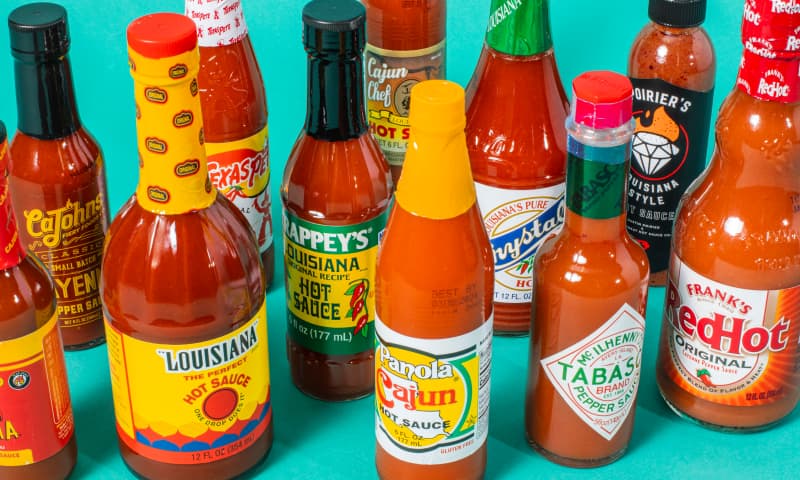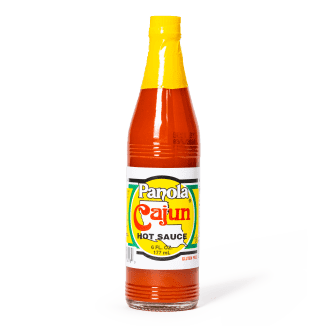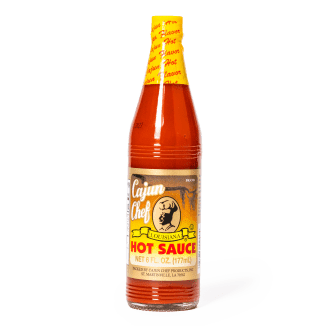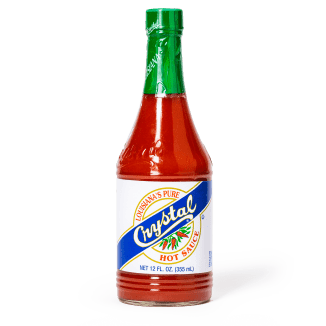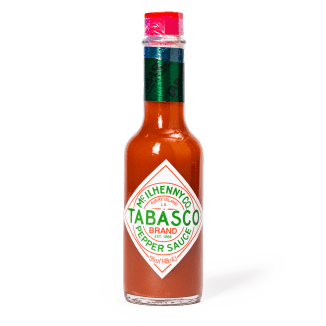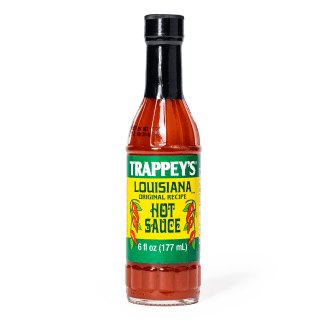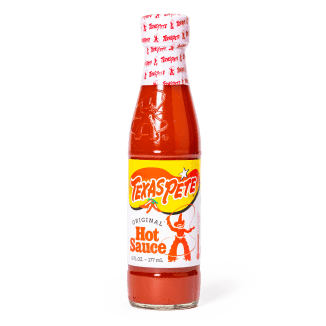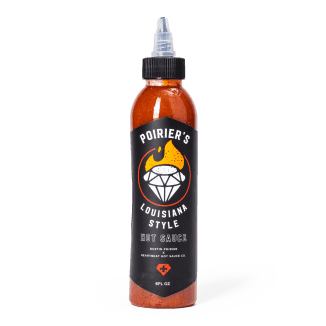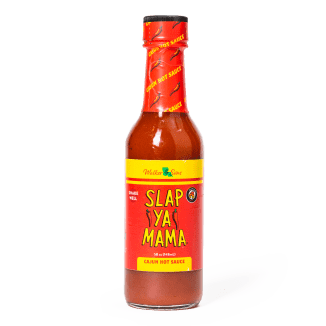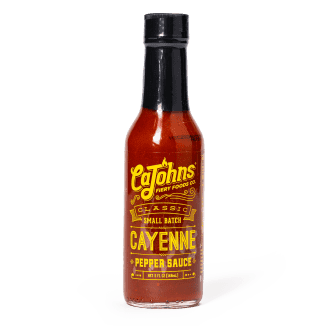The loyalty some people have to specific brands of hot sauce is undeniable. There’s “The Cult of Crystal Hot Sauce,” a surprising variety of Frank’s RedHot superfan merchandise, and the never ending debate between the champions and critics of Tabasco. These fans and critics have one thing in common: an enthusiasm for Louisiana-style hot sauce.
We wanted to celebrate this beloved condiment, so we rounded up 11 different Louisiana-style hot sauces, including products from big-name brands that have been around for decades as well as small companies that have emerged in recent years. Panels of tasters tried them two ways: plain and on creamy grits. We also had an independent lab analyze their heat levels in Scoville Heat Units (SHU). Each sauce has a personality, and they range in flavor and consistency. Despite their distinguishing characteristics, they are all linked by similar ingredients and a deep history.

The sauces in our lineup were delightfully diverse. They ranged in flavor, heat, and consistency.
What Exactly Is Louisiana-Style Hot Sauce?
The foundational recipe for Louisiana-style hot sauce consists of vinegar, chiles, and salt. It’s traditionally made with one of two chiles: cayenne or tabasco. Tabasco chiles’ flavor has hints of celery and green onions with a delayed, lingering, flat heat that is felt mainly on the lips and tongue. On the other hand, cayenne chiles taste tart, acidic, and earthy, with a rapidly dissipating, slightly sharp heat felt in the front and middle of the tongue.
Some modern hot sauce manufacturers add garlic or other spices as well as thickeners or preservatives. The ingredients are pureed, giving the sauce a uniformly smooth consistency.

Louisiana-style hot sauces are not only great condiments but also handy ingredients. They can add a special kick to gumbos, sauces, dips, and more.
Louisiana-style hot sauce is distinguished from other styles by its vinegar-forward flavor. Unlike Mexican- or Caribbean-style hot sauces, which have less vinegar or none at all, Louisiana-style hot sauces typically list vinegar as the first or second ingredient on their labels. Louisiana-style hot sauce is also known for its bright, fiery red color and is milder than sauces made with Scotch bonnet, bird’s eye, and other much hotter chiles.
Some smaller and newer brands are reimagining Louisiana-style hot sauce in an effort to appeal to various demographics and distinguish themselves from larger manufacturers. These brands may add additional spices, milder chiles, and sometimes vegetables to their products. Despite these unique flares that smaller manufacturers add to their sauces, their baseline ingredients and flavors are still reminiscent of traditional Louisiana-style sauces.
The Rich History of a Beloved Condiment
To learn more about the story behind Louisiana-style hot sauce, we spoke with Adrian Miller, scholar and author of the James Beard Award–winning book Soul Food: The Surprising Story of an American Cuisine, One Plate at a Time (2013). He explained that the cayenne chile has long been valued for its medicinal qualities. Indigenous tribes and enslaved West Africans preserved cayenne chiles in vinegar and salt as early as the 16th century. The mixture was used to treat disease and, in some cases, season bland plantation food. Medical journals in the antebellum United States spoke to the power of the cayenne chile, which was used as a remedy for everything from sore throats to gastrointestinal issues. Today we know cayenne is rich in magnesium; iron; vitamins A, B, and C; and capsaicin, the active chemical compound in chiles that causes a burning sensation when consumed.

This is the home of Evangeline Hot Sauce, the former name of Cajun Chef Louisiana Hot Sauce. (Photo by Lee Russell, 1938)
As Miller explains in his book, tabasco chiles, which are native to Mexico, were first planted in the United States by a Louisiana plantation owner named Colonel Maunsel White and used in an attempt to curb a cholera epidemic among the white and Black population in the 1850s South. What Colonel White did afterward made an impact on culinary history.

Workers picking tabasco chiles in the McIlhenny Company's field in Avery Island, Louisiana. (Photo by Todd Webb, 1947)
The enslaved people on White’s plantation harvested the tabasco chiles and processed them into sauce, which White marketed as “Colonel White’s Concentrated Essence of Tobasco [sic] Pepper” beginning in 1864. Colonel White’s sauce was one of the first Louisiana-style hot sauces to be marketed mainly as a condiment. Miller theorizes that White shared his findings with other Louisiana plantation owners, including his contemporary Edmund McIlhenny, who founded the modern-day McIlhenny Company in 1868.
As formerly enslaved Black people moved across the country after Emancipation, they brought Louisiana-style hot sauces with them and sold them in their shops and saloons. Today, this style of sauce is manufactured far beyond Louisiana, from North Carolina to Ontario.
How Louisiana-Style Hot Sauce Is Made
A chile’s journey from the field to a bottle of Louisiana-style hot sauce can begin anywhere from Louisiana to South America. For cayenne chiles, it usually begins in Doña Ana County, New Mexico. Cayenne chiles are more commonly used than tabasco chiles, explained Danise Coon, research specialist associate for the New Mexico State University Chile Pepper Institute. In addition to being very easy to grow, cayenne plants produce large yields and can grow chiles up to 10 inches long and an inch wide. Tabasco chiles are tiny by comparison, just an inch long and about ¼ inch wide. As a result, cayenne chiles “are a lot easier to harvest, especially if you’re doing it by hand,” Coon says.
After they’re harvested, the raw chiles are pulverized and combined with salt to form a mixture called pepper mash. Mashing them creates a consistent texture without air pockets or large pieces, which allows the bacteria to uniformly ferment the chiles. This process also releases more of the chiles’ spiciness since it breaks down the white pith inside their pods, where most of the capsaicin lies.

Tabasco pepper mash is aged for three years in oak barrels. This process has stayed nearly the same for 150 years. (Photo by Drew Angerer/Getty Images)
The mash is transported to hot sauce manufacturers and fermented in oak, plastic, or metal barrels for anywhere from three months to three years. Tabasco is aged in oak barrels and has an astringent taste that may be from the presence of tannins in the wood. Mashes fermented in oak are often associated with pricier sauces, since oak barrels are more expensive, harder to maintain, and less durable than plastic barrels.
Fermentation develops lactic acid, which gives sauces a tangy taste and helps preserve the mixture. The longer the mash ages, the more it develops complex flavors. Sometimes the mash is then mixed with other batches of fermented mash before being combined with vinegar and spices and strained.
Similar Ingredients, Different Flavors and Textures
The sauces in our lineup were delightfully diverse, and there was truly something for everyone. Those that were especially bright, fresh, or citrusy tended to be thinner and more brightly colored. Those with deeper, richer, and smokier qualities were usually less vinegary and thicker. These thicker sauces tasted savory, sweet, or even buttery. Some sauces had more pronounced seasonings. Garlic was especially common.

The Scoville scale measures the pungency or spiciness of chiles by analyzing their capsaicin levels. Sweet bell peppers are at the bottom of the scale, while chiles such as habaneros are closer to the top. The sauces in our lineup generally had mild to medium heat.
In terms of spiciness, our lab tests reported the 11 sauces ranged from 310 to 3,700 SHU. Although that’s a wide range, those numbers are still mild to medium on the overall Scoville scale. Sauces on the high and low ends stood out the most to our tasters, who could tell that the sauce with the highest SHU rating was the spiciest in the lineup and found sauces with lower SHU to be brighter and more citrusy than spicy. While keeping this data in mind, we know that spice tolerance varies among cultures, and people have different personal preferences. Since each sauce is unique, we didn’t rank them from best to worst. Instead, we’ve sorted them from mildest to spiciest and included notes on flavor, consistency, and characteristics that make each special. We hope that you’ll use our chart to find the sauces that are best for you.
- Taste 11 products, priced from about $0.10 to about $2.00 per ounce, purchased online and in Boston-area supermarkets
- Sample plain
- Sample on grits
- Samples were randomized and assigned three-digit codes to prevent bias
- Samples were submitted to an accredited food lab to evaluate their heat level in Scoville Heat Units; higher scores are spicier
